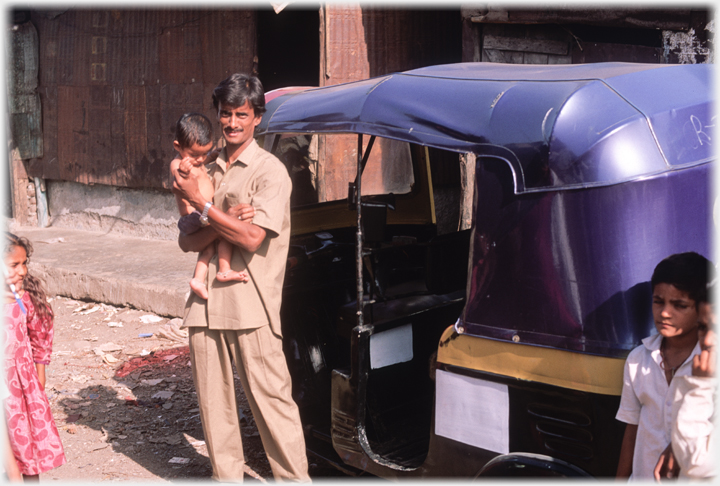 Driver with his auto in Chambur, Mumbai...
Driver with his auto in Chambur, Mumbai...
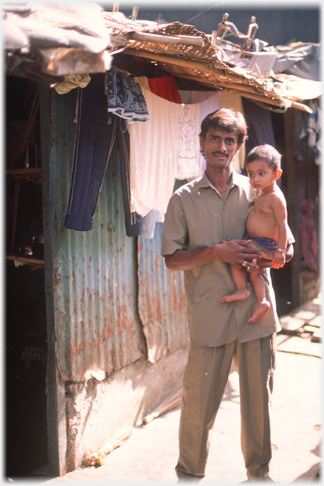 ...and in front of his house
The area called Chambur in the 1990s was entirely composed of houses built by their occupants on Bombay's biggest rubbish dump. Some 400,000 people lived there at one time. The houses had no sanitation, no water and no legal electricity. The most striking feature of the people was their general air of happiness, and their beautifully pressed clothes.
...and in front of his house
The area called Chambur in the 1990s was entirely composed of houses built by their occupants on Bombay's biggest rubbish dump. Some 400,000 people lived there at one time. The houses had no sanitation, no water and no legal electricity. The most striking feature of the people was their general air of happiness, and their beautifully pressed clothes.
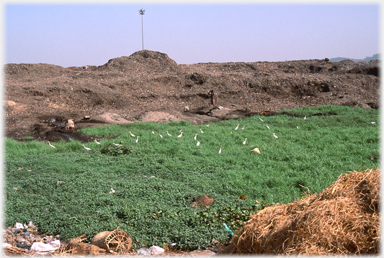 Between the mounds of rubbish marsh areas attract egrets - and diseases
Between the mounds of rubbish marsh areas attract egrets - and diseases
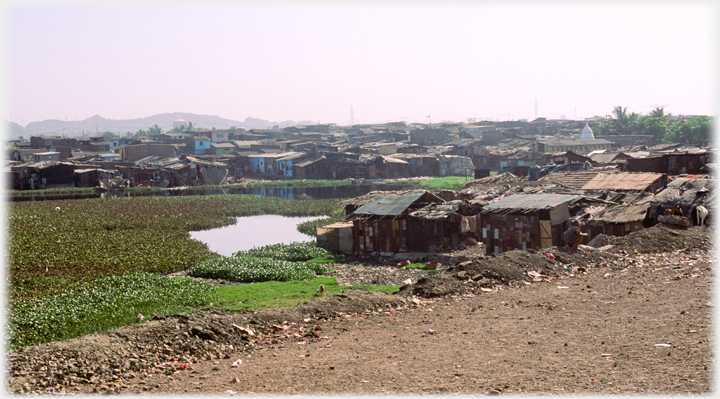 A typical view of Chambur: marsh between rubbish heaps, and the heaps crammed with houses constructed by their owners
A typical view of Chambur: marsh between rubbish heaps, and the heaps crammed with houses constructed by their owners
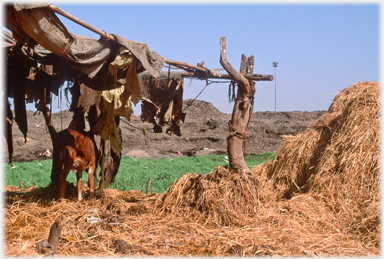 Calf and tattered shelter, but plenty of forage, against the backdrop of a rubbish heap
Calf and tattered shelter, but plenty of forage, against the backdrop of a rubbish heap
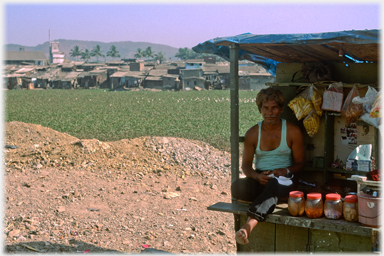 Pop-up shops are not new. One of the kiosks that serve the area
Pop-up shops are not new. One of the kiosks that serve the area
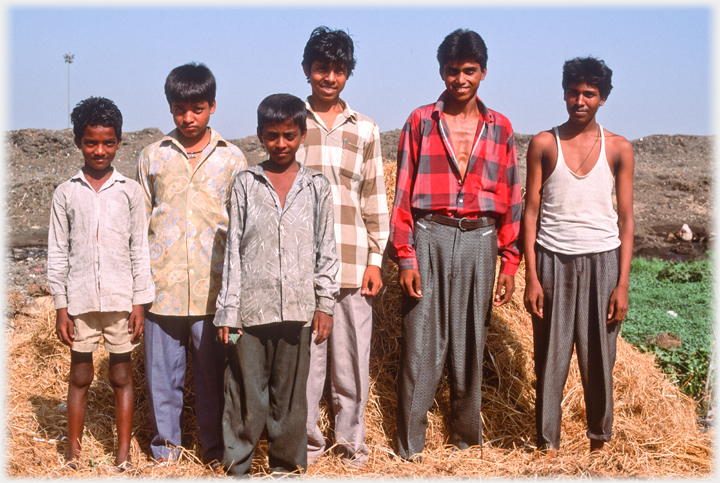 Preventing any group of people forming a posed group in India or Vietnam is almost impossible.
Preventing any group of people forming a posed group in India or Vietnam is almost impossible.
No less so in Chambur
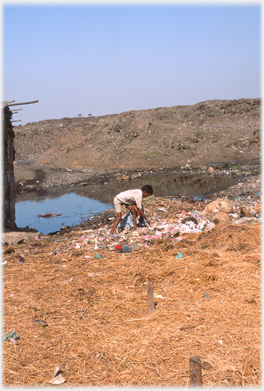 A 'rubbish picker', Chambur's main employment
A 'rubbish picker', Chambur's main employment
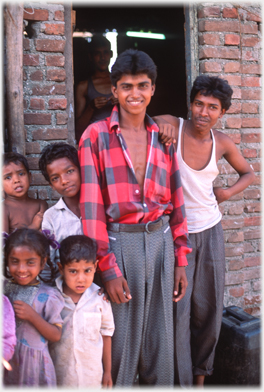 Same two men with their house and more children
Same two men with their house and more children
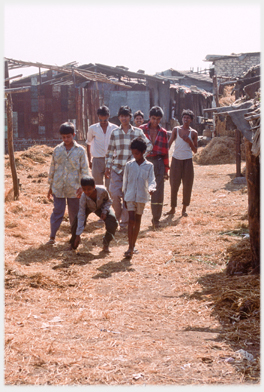 On a pathway with the skeletons of houses
On a pathway with the skeletons of houses
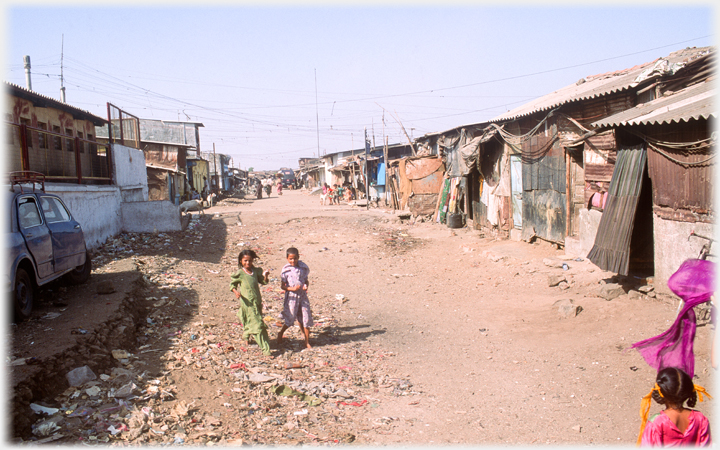 The main street of Chambur
The main street of Chambur
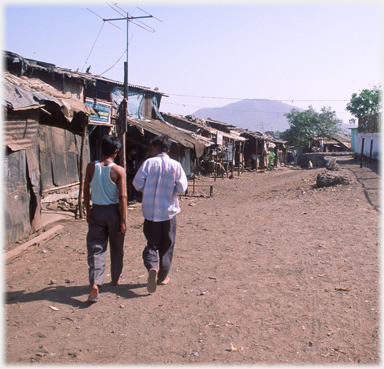 Main street with two men and a reminder of the world beyond from the hill that can be seen
Main street with two men and a reminder of the world beyond from the hill that can be seen
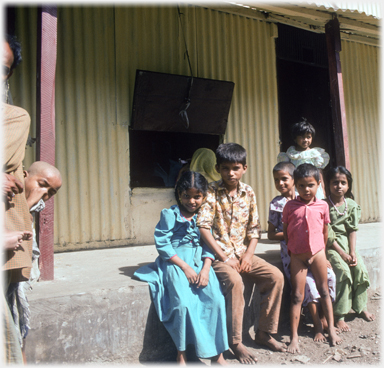 At the heart of Chambur is this small clinic around which people congregate
At the heart of Chambur is this small clinic around which people congregate
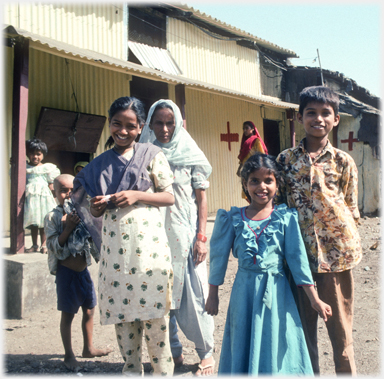 A woman joins the children a little less sure that photography is a good idea
A woman joins the children a little less sure that photography is a good idea
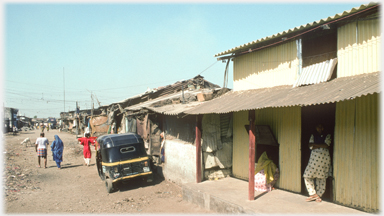 An auto waits by the clinic
An auto waits by the clinic
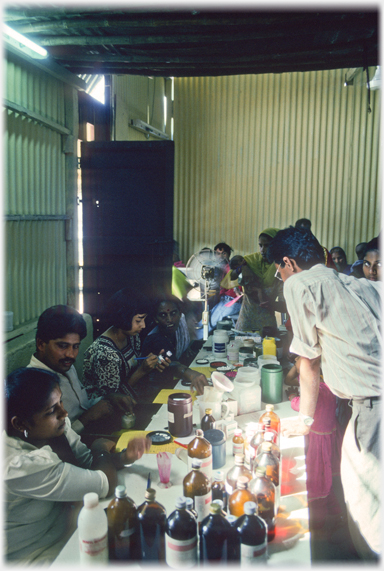 Inside the clinic
There were nearly as many people living in Chambur at the turn of the century as in the city of Leicester in the UK. As they were regarded as squatting illegally there were no official services. This building provided the only health care at the time.
Inside the clinic
There were nearly as many people living in Chambur at the turn of the century as in the city of Leicester in the UK. As they were regarded as squatting illegally there were no official services. This building provided the only health care at the time.
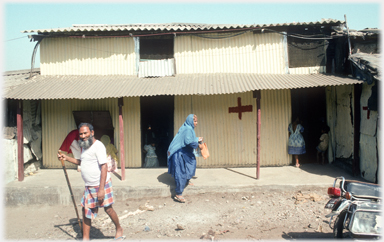 Chambur's only health provision
Chambur's only health provision
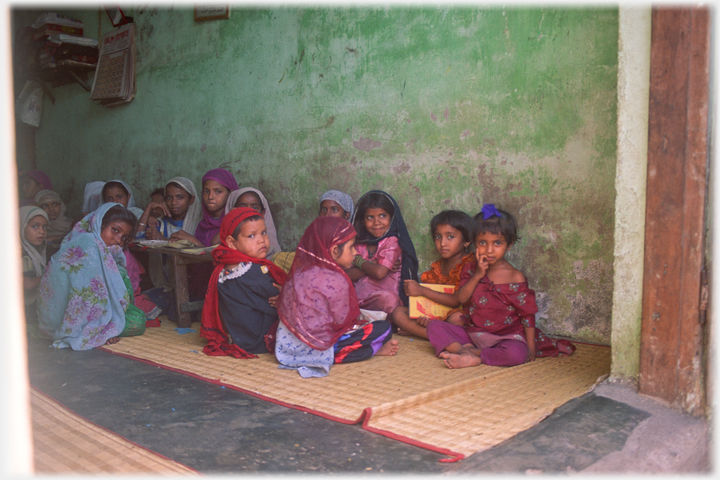 The girls side of a classroom in a small Islamic school provided by the community. While religious organisations provided most of the basic services to the community, divisions between beliefs also lead to its main problems - in Chambur riots destroyed lives
The girls side of a classroom in a small Islamic school provided by the community. While religious organisations provided most of the basic services to the community, divisions between beliefs also lead to its main problems - in Chambur riots destroyed lives
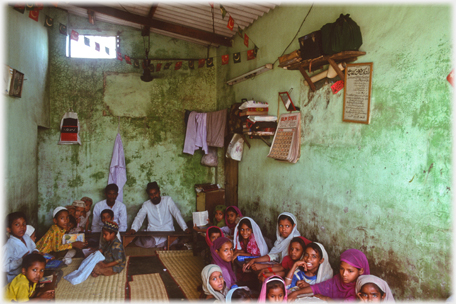 The school room with teachers and pupils
The school room with teachers and pupils
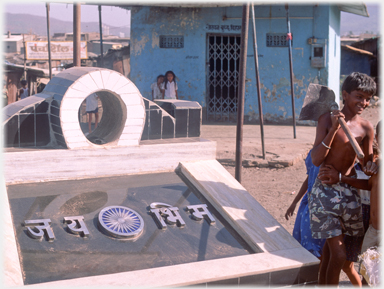 A small Buddhist monument, with a reminder that Hindus regard Buddhism as a branch of their religion
A small Buddhist monument, with a reminder that Hindus regard Buddhism as a branch of their religion
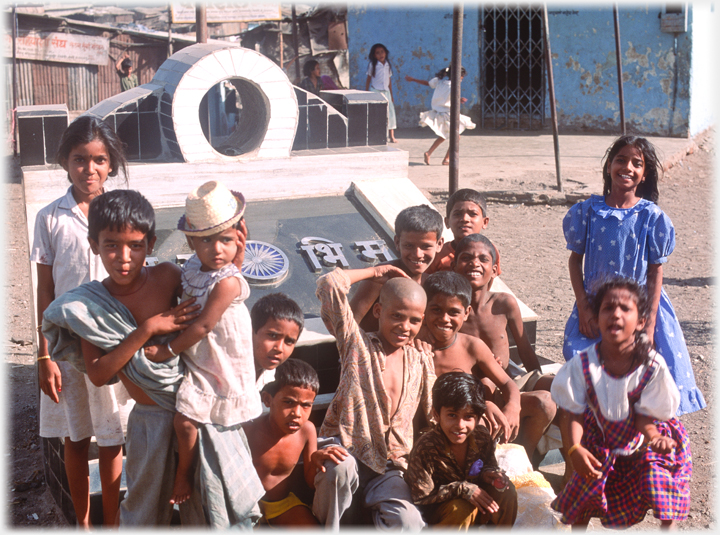 But, as ever, trying to photograph any non-human object is beyond the realm of many people's beliefs: Surely you want to photograph them? The children crowd in
The next page
is about Spirit Screens, those, to western eyes, strange walls which confront the visitor at the entrance to temples and important buildings preventing one seeing into the building.
But, as ever, trying to photograph any non-human object is beyond the realm of many people's beliefs: Surely you want to photograph them? The children crowd in
The next page
is about Spirit Screens, those, to western eyes, strange walls which confront the visitor at the entrance to temples and important buildings preventing one seeing into the building.
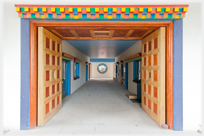

 Go to the other end of the social scale - a wedding in Delhi
Go to the other end of the social scale - a wedding in Delhi
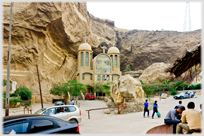 Go to a page on the community in Cairo that specialises in re-cycling
Go to a page on the community in Cairo that specialises in re-cycling
 Go to a page on a Faroese island with very clean air
Go to a page on a Faroese island with very clean air
